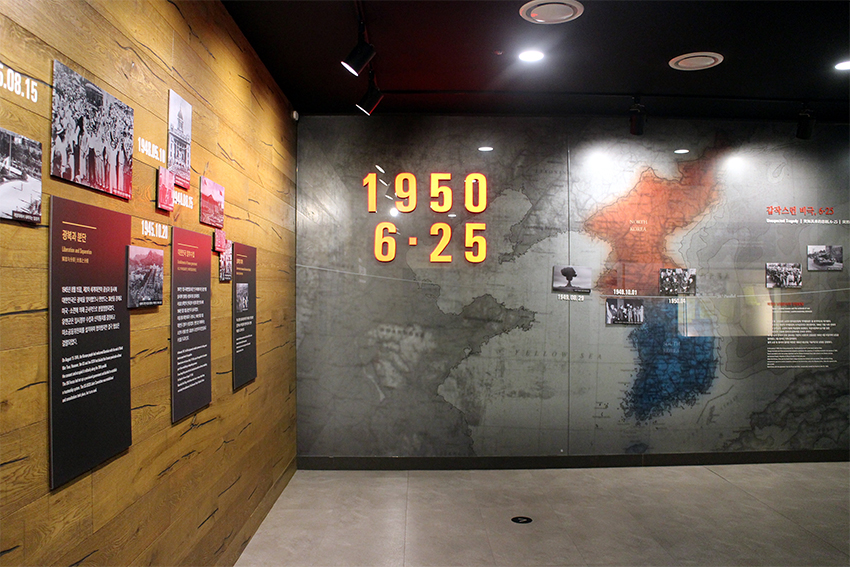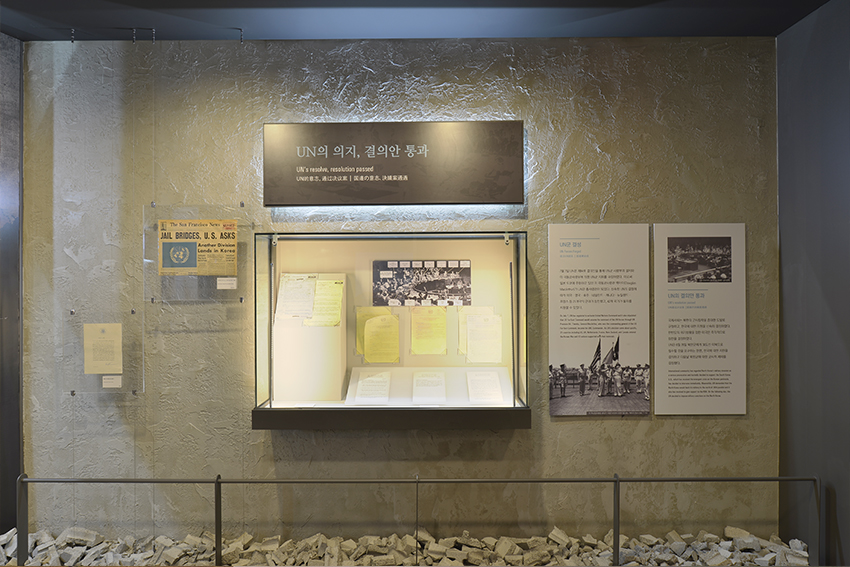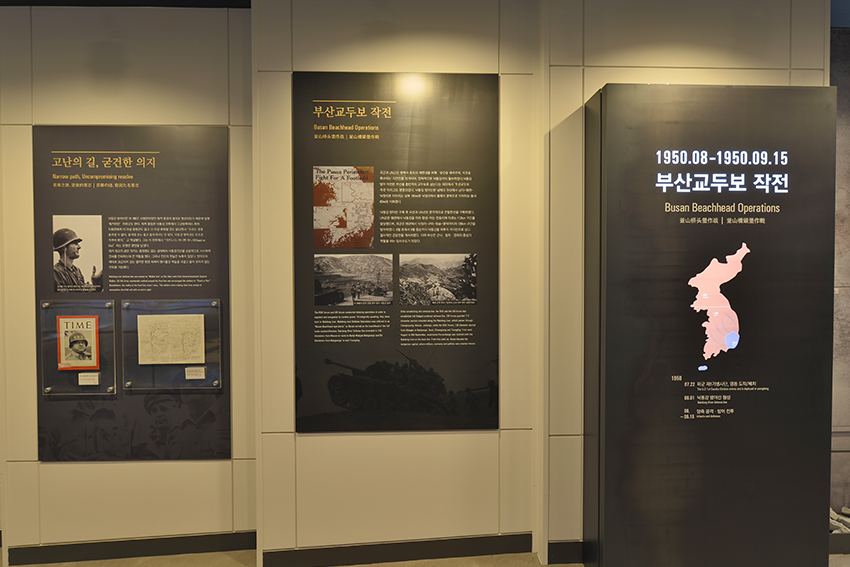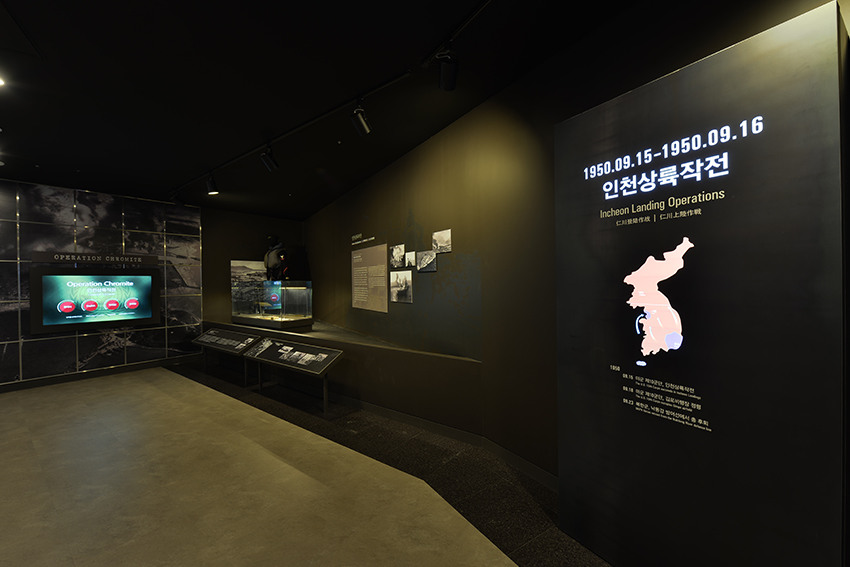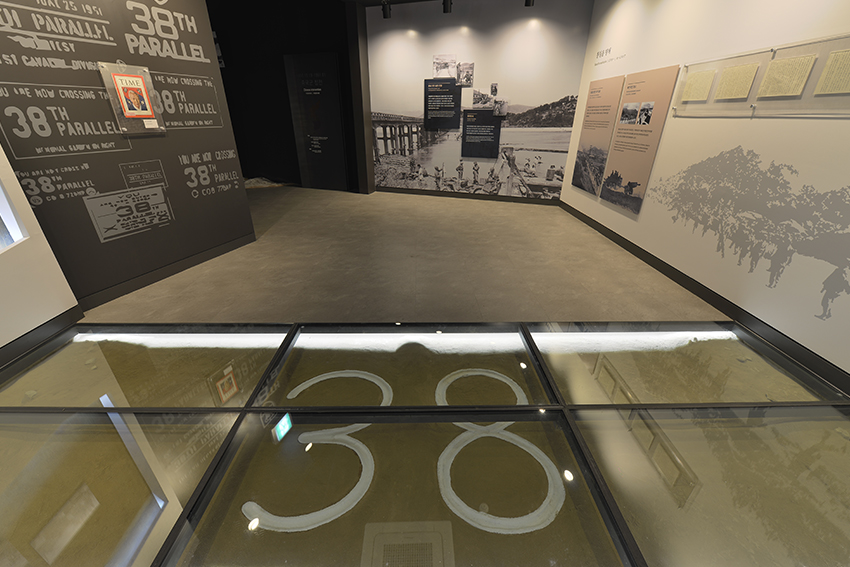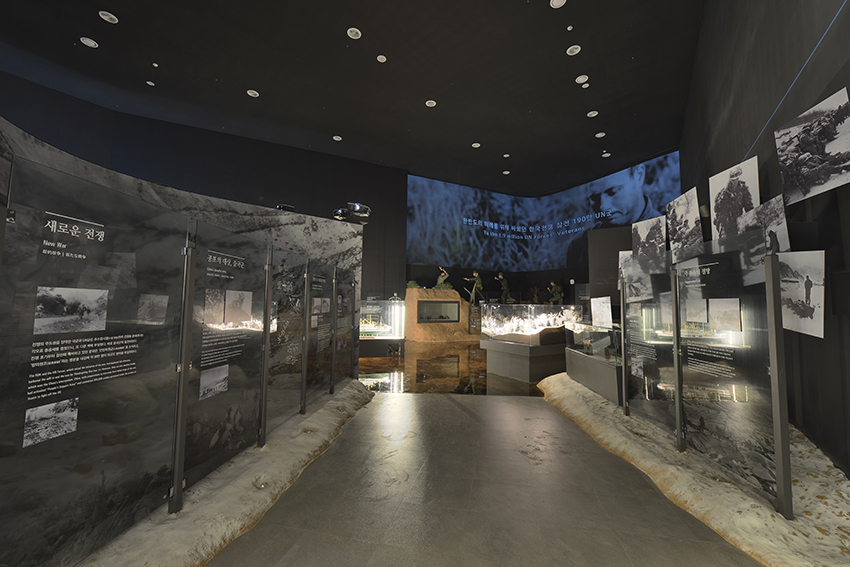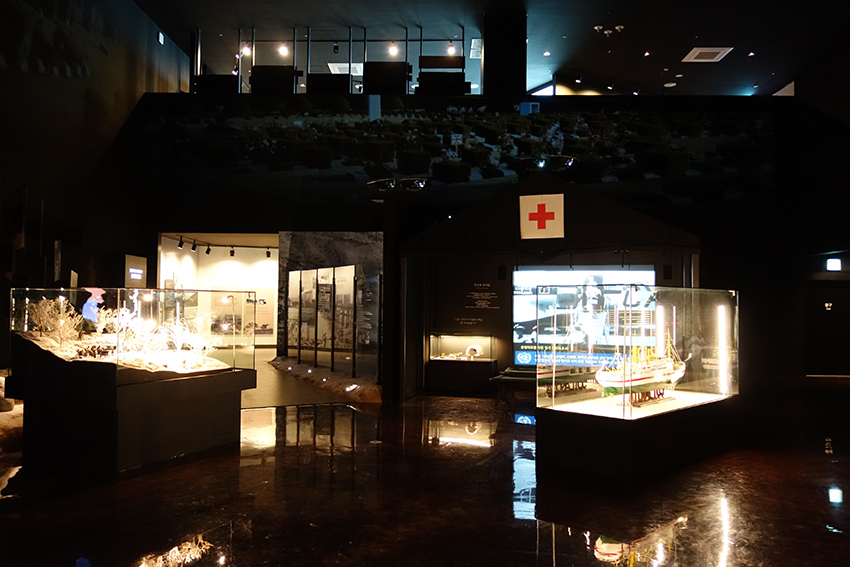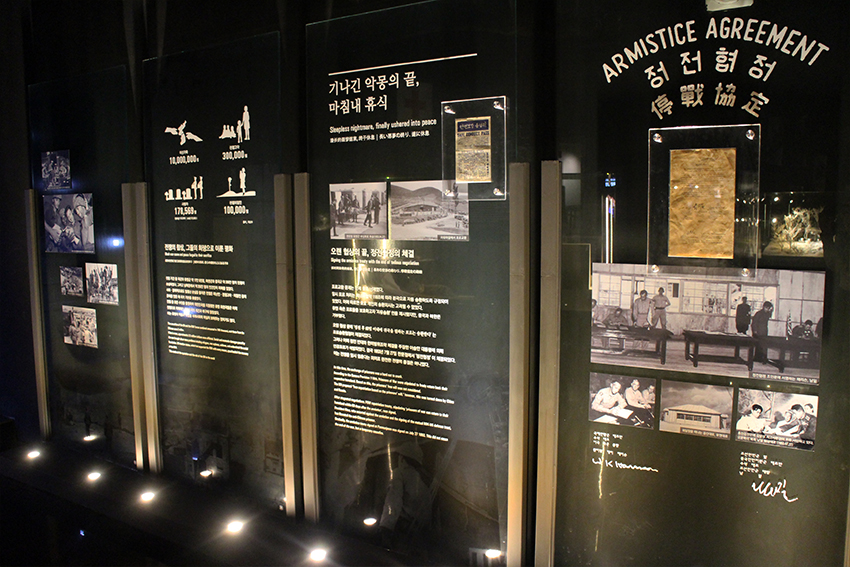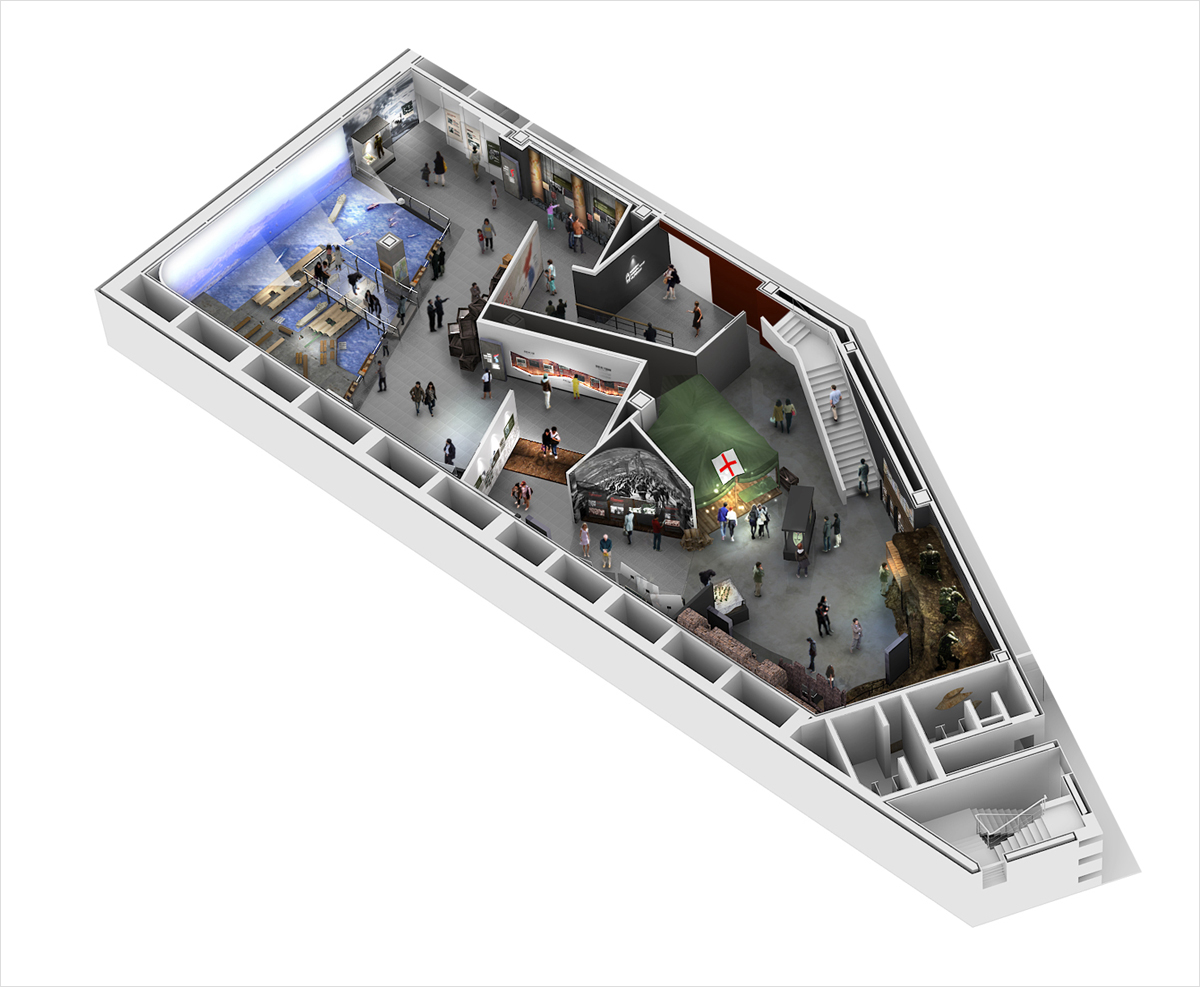
The Korean War Room
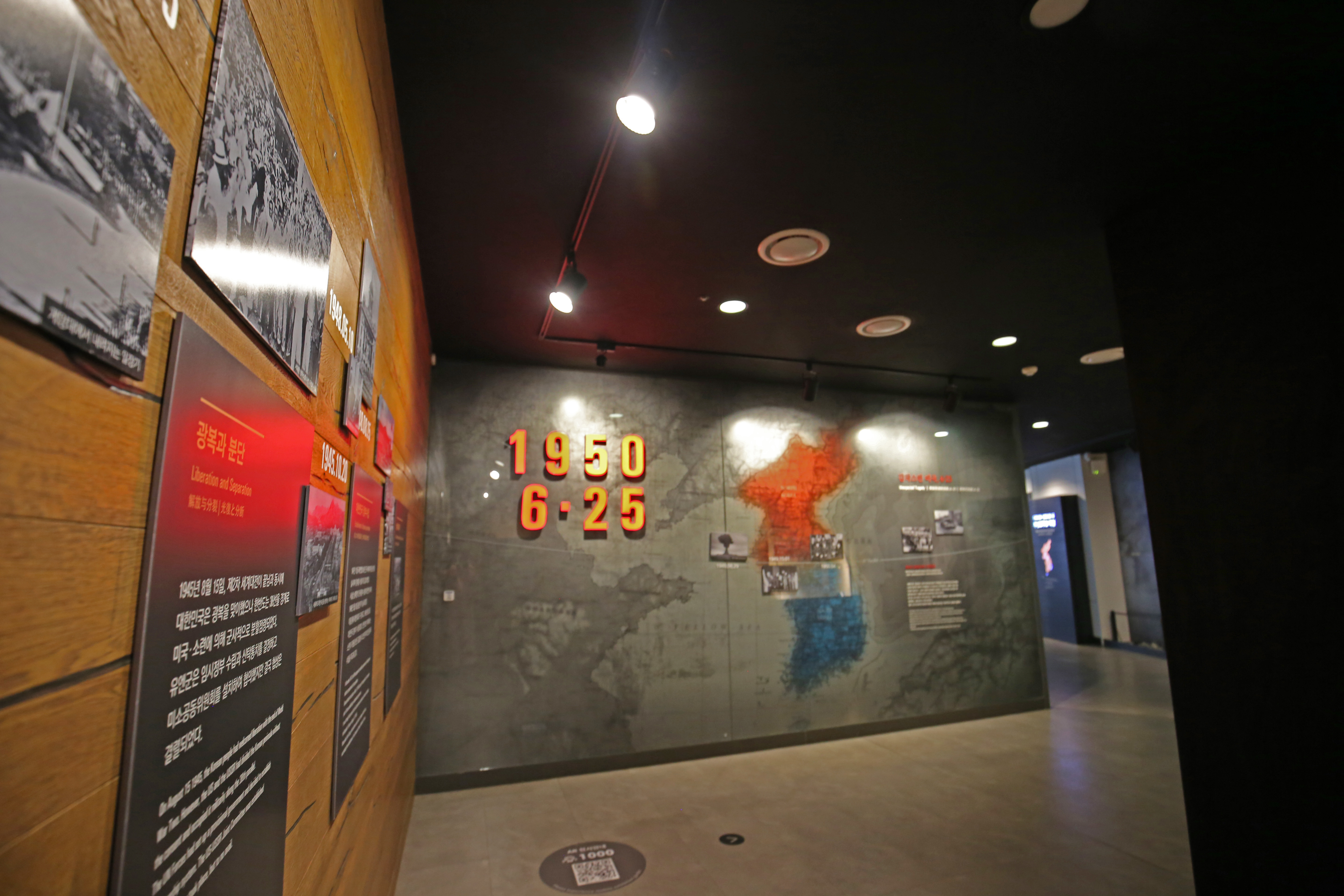
After the establishment of the South Korean government, North Korean forces crossed the 38th Parallel to launch a surprise attack at dawn on June 25, occupying Seoul in just three days. The United Nations determined North Korea’s military invasion to be a severe provocation and decided to support South Korea. The US Far Eastern Command sent Task Force Smith, which was stationed in Japan, to the front in Pyeongtaek, but the Task Force failed to line up for battle and was therefore beaten in the Jookmiryeong Battle around Osan on July 5th, 1950, leading the US forces to retreat to the Geum River. The Pusan Perimeter Operation, which set the Nakdonggang River as the final front line, and Operation Chromite, which turned crisis into opportunity, both laid a foundation for UN forces to advance to Seoul from Busan and reclaim Seoul. Korean forces and UN forces, which led the victory of Operation Chromite, completely reclaimed Seoul, and the 3rd Division of Korean forces broke through the 38th parallel on October 1st. The following day, General MacArthur issued an operation order for all forces to move North, and the UN also decided to advance to the North with the purpose of establishing a unified democratic government. Korean forces and UN forces, which dominated the Yalu River and the Tumen River, expected that the war would be over soon, but the Communist Chinese army had carefully prepared itself to intervene in the War. The intervention of the Communist Chinese army stripped Korean forces and UN forces of the upper hand in the War, making them in retreat to the South. High-pitched armistice agreements and intensive fighting continued, bringing the War to a standstill. After lengthy negotiations, a armistice agreement was finally reached in Panmunjeom in July 27th, 1953. It was a long nightmare for everyone. Everyone hoped for the end of the nightmare, but the armistice agreement didn’t automatically bring about a complete end to the War.
3 years and 1 month, 1,129 days: the period of the War The Korean War Room focuses on the relationship between the UN and Korea during the Korean War that we know well. UN forces, taking the first step in a strange land and entering Busan harbor to come to the aid of Korea; the Battle of Chosin Reservoir, where forces had to fight not just against the enemy but also a bitterly cold winter; the Hungnam Evacuation; the Miracle of Christmas; the Mission of Stroller transport for rescuing war orphans, and so on -- We must always remember these old histories made possible by sacrifice and devotion.
Main point of the exhibit
-
Beginning of the relationship between the UN and Korea
This conveys the historical facts regarding the establishment of the Korean government after independence, the background of the outbreak of the Korean War, and organization of UN Forces. -
Taking a step in a strange land to defend freedom
This exhibit reproduces the No. 1 and 2 docks of Busan Harbor, which served as a gateway to Korea, and helps visitors look into the situation of UN forces entering the harbor and materials support at the time. -
Operation Chromite and reclaim of Seoul
The map of the mission tells visitors how the mission to reclaim Seoul was developed following the success of Operation Chromite. -
A new enemy, and retreat
This vividly shows a painful and desperate moment when UN Forces suffered from the bitterly cold winter and the massive attacks of the PRC Army’s human wave strategy. -
Iron Triangle Battlefield
The Iron Triangle Battlefield is a strategic position to dominate the central forward area of the Korean War. So, this exhibit introduces UN Forces who made brilliant exploits and sacrificed their lives in the battle to dominate this field.
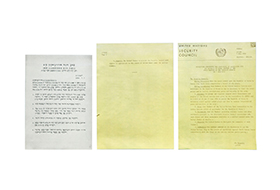
U.N. Security Council Resolution 84, Replication 1950. 7. 7 | 17.7×25 / 20.3×28
UN Security Council Resolution 84 was adopted on July 7th, 1950. This is about expressing gratitude to member countries that supported the UN resolution, authorizing military forces and support to the headquarters of UN Forces, and granting authority to use UN aircraft.
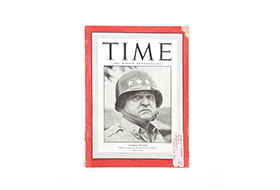
Cover of the Times, General Walton Harris Walker, 1950. 7. 31 | 21×28
This cover of the Times from the 1950s features General Walton Harris Walker, who commanded the 8th Division of the U.S. Army during the Korean War.
* This image was shot by Carly Mydans.
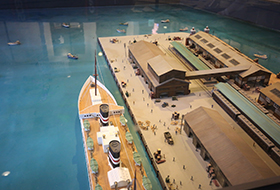
A diorama of Busan Harbor
A reproduction of Busan Harbor at the time, where the military materials and soldiers arrived under the UN resolution, and the shelters at Busan station and in Youngju-dong where refugees arrived.
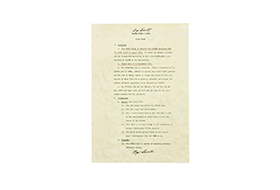
Staff study of the 10th division of the U.S. Army participating in the Operation Chromite in the 1950s | 20.8×29
This is a report about missions written by staff officers related to Operation Chromite. This is a highly confidential document written on August 12th, 1950 that explains missions that were to be performed on September 15th, following the landing at and the defense of Incheon, as well as reclaiming airports and Seoul. It also briefly covers countermeasures by assuming many scenarios for the success or failure of the mission.
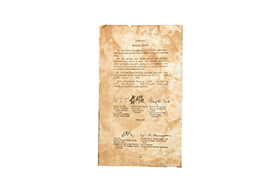
Armistice Agreement Replication 1953. 7. 27. | 34.3 × 29.5
This is a Armistice agreement document that provides for the suspension of the Korean War with the signatures of 5 key people. At the time of the agreement, Harrison from the US, Nam-il from North Korea, Paeng Deok-hui from China signed first, and Kim Il-sung from North Korea and Clark, commander-in-chief of the UN Forces signed later.






